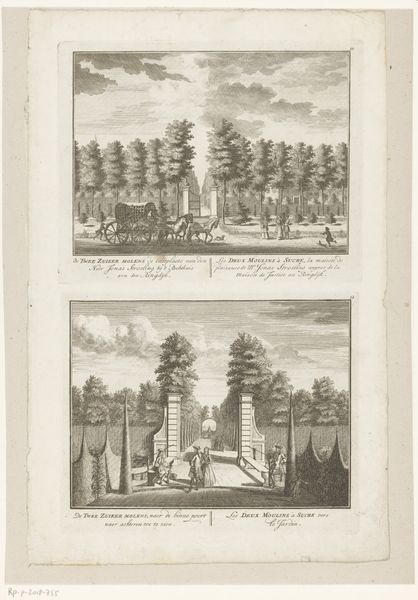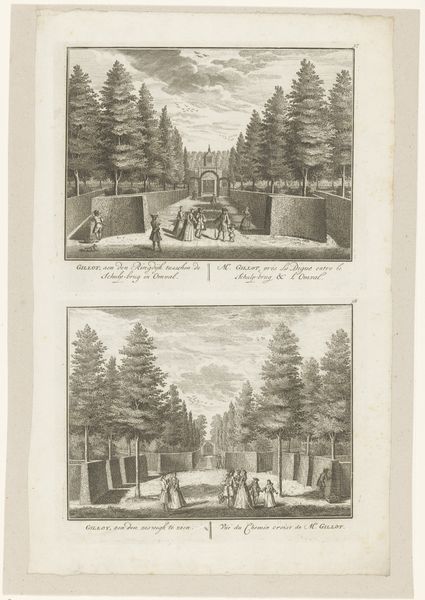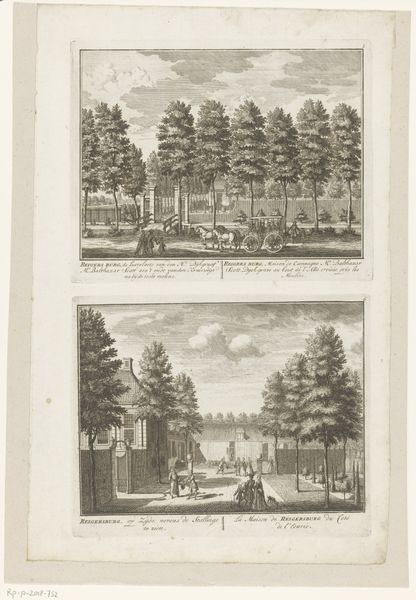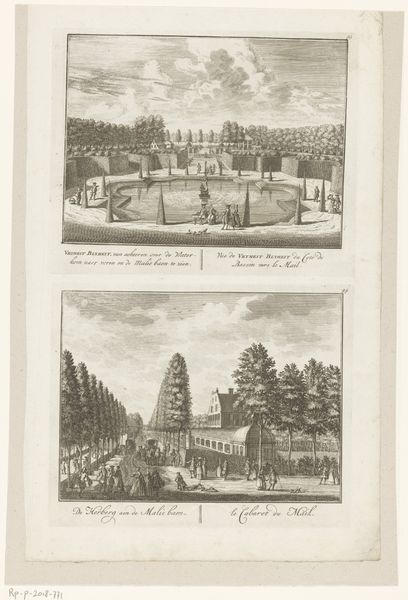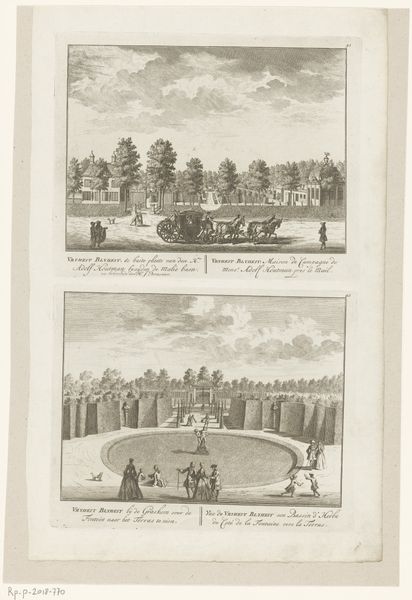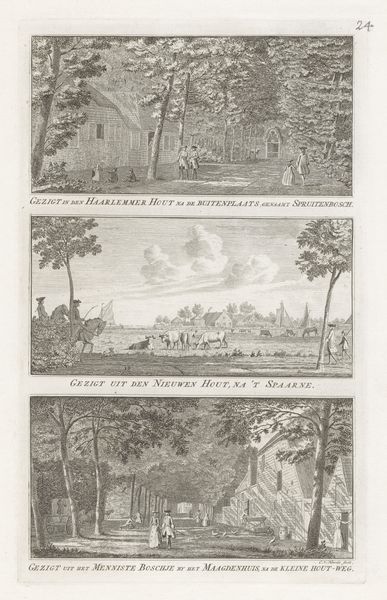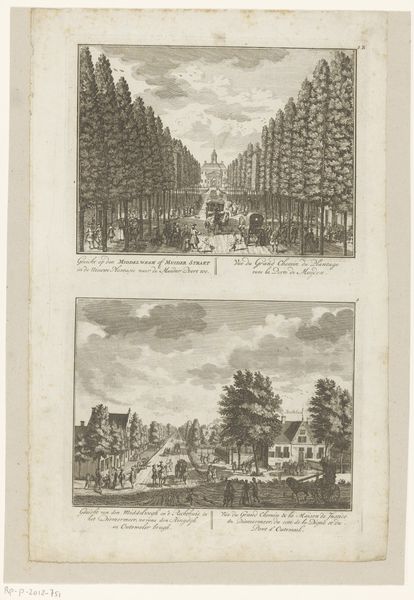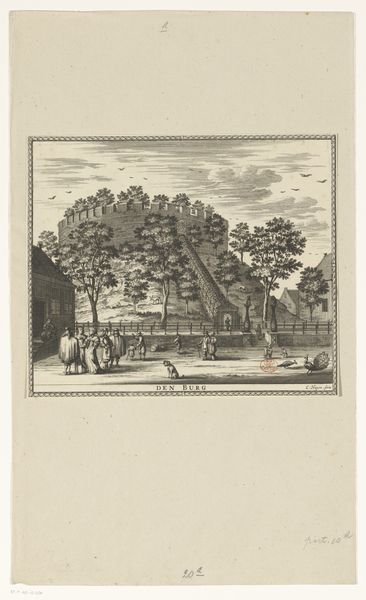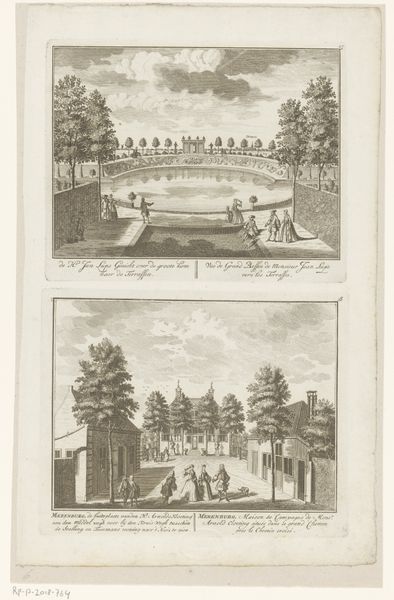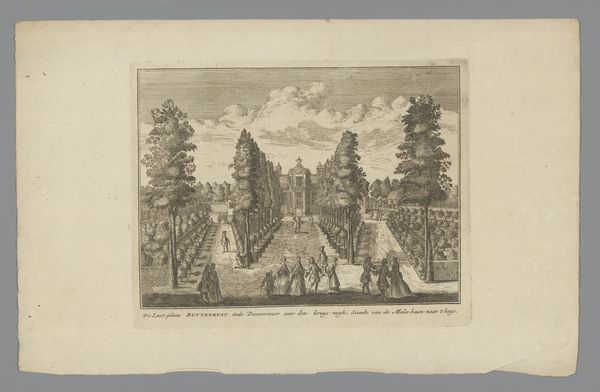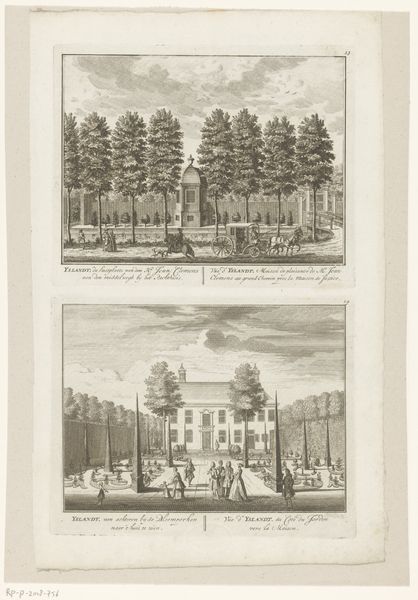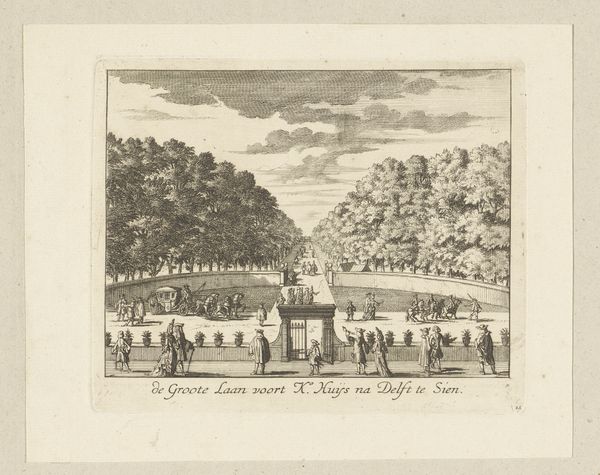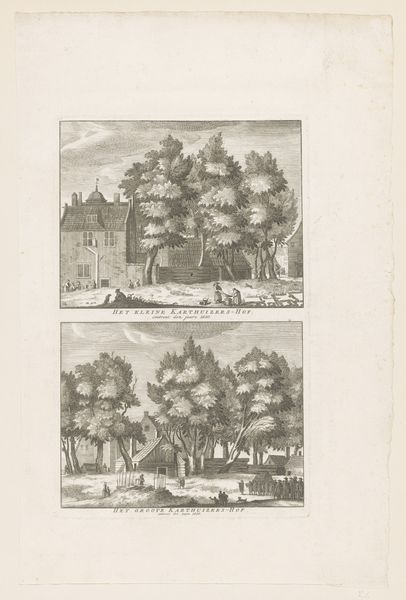
Gezicht op buitenplaats Buitenrust en gezicht op de tuinen van buitenplaats Buitenrust 1725 - 1768
0:00
0:00
print, engraving
#
baroque
#
dutch-golden-age
# print
#
landscape
#
engraving
Dimensions: height 168 mm, width 211 mm, height 178 mm, width 208 mm
Copyright: Rijks Museum: Open Domain
Curator: What strikes me immediately is how orderly and composed it is—rigid lines meeting at a vanishing point draw the eye toward what is most likely the grand manor in the distance. Editor: I sense a yearning for an idealized past here, captured through meticulously crafted imagery and details within this engraving titled "Gezicht op buitenplaats Buitenrust en gezicht op de tuinen van buitenplaats Buitenrust." We believe it dates sometime between 1725 and 1768, showcasing garden views of Buitenrust. The artist is, unfortunately, anonymous. Curator: Absolutely, but notice the starkness of the print. While serene at first glance, there's a sense of formality perhaps verging on melancholy. Is that the artist's mood leaking through? Or the rigid lines—suggesting a prison, which, for a lot of Dutch people at that time, wasn’t too far from their circumstances? Editor: Well, the garden was deliberately constructed as a representation of order over nature’s chaos; thus, its rigidity is culturally indicative of how nature should be idealized. Also, this type of print, and other like it, perpetuated an imagined paradise for buyers interested in acquiring status symbols to display within their household. These were also sold to people, locally and internationally, that would probably never experience the site itself. What do you make of the people within each landscape panel? Curator: The tiny figures reinforce this sense of an idealized community—graceful figures occupy and utilize the space, giving this site a veneer of civility, tradition, leisure. Editor: Indeed. There’s a celebration of upper-class values at play here. Note how it's rendered entirely through precisely engraved lines and cross-hatching, which create the textures and shading in a very calculated fashion. This adds to the overall sense of intentionality. This artwork utilizes very calculated artistic maneuvers to invoke specific meaning. Curator: But beneath that artifice, a longing lingers for harmony and control within both domestic life and also our human place within nature. And how can we divorce any image that projects "harmony" or "control" from a social desire that's potentially quite coercive? The composition can make me simultaneously admire and distrust the imagery before me. Editor: An excellent point, a vital point for anyone contemplating visual documents from the past, but certainly Dutch Golden Age pieces in particular!
Comments
No comments
Be the first to comment and join the conversation on the ultimate creative platform.
